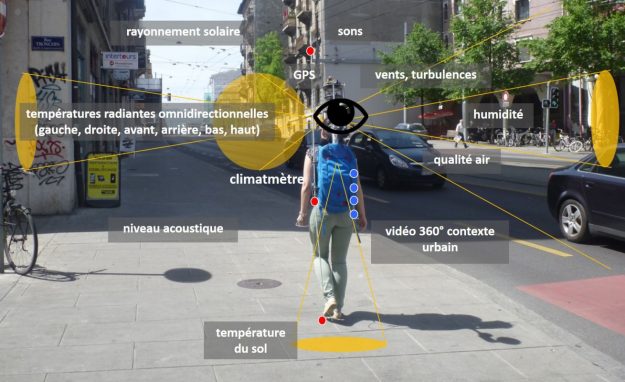MitigAtion of ClimAte change by Design, Adaptation and Monitoring
The purpose of the project is to contribute to the enrichment of objective knowledge on the determinants of the urban microclimate so that communities, urban planners, landscape architects can effectively implement measures that positively condition the well-being of users of the city from solid knowledge and appropriate references. The contribution of nature is a strong element of these strategies and will only be effective if conditions conducive to its development are encountered.
The urban environment affects the physical, social and mental well-being of inhabitants. In Switzerland as elsewhere, the main urban centres experience strong pressure to densify both for economic reasons (appeal of urban life, concentration of activities) and legal ones (i.e. the Spatial Planning Act). The climate outlook shows that these developments will be exacerbated in urban areas. The urban trees that politicians rely on to temper the climate are already heavily impacted. The strong constraints to come must be understood and anticipated without delay, given the lifespan of urban developments and planted green spaces.
Readings taken in several large Swiss cities using the microclimate-meter developed by hepia have made it possible to highlight situations that cannot be explained on the basis of the state of knowledge or modelling. For example:
a) Why is it that trees do not always have a cooling effect in urban areas?
b) Why is it that bodies of water only rarely produce the expected freshness?
c) How can we ensure that urban areas are properly used as a means of climate control?
d) How can green spaces in urban areas help to improve the climate situation?
In order to ensure targeted climate policies and subsequent expenditure and achieve the expected ecosystem services, it is crucial to understand the mechanisms that influence Swiss urban microclimates, and specifically to identify the conditions that limit tree development in the urban areas.
With this aim in mind, the MACADAM project involves:
a) Taking detailed microclimatic readings.
b) Documenting and analysing the contributions of each element affecting the identified areas, namely: plant, water, materiality and their spatial distribution.
c) Creating useful indicators to assess the microclimatic context of people and vegetation.
d) Drafting a reference guide illustrating case studies and providing concise, factual explanations on how the various elements interact in an urban setting.
